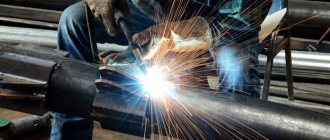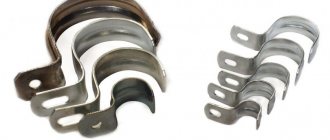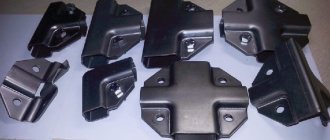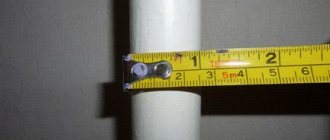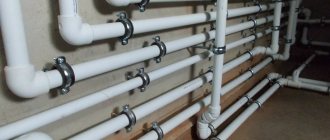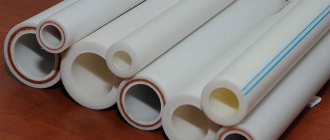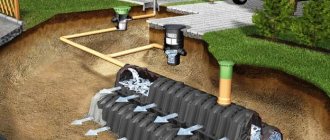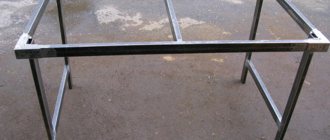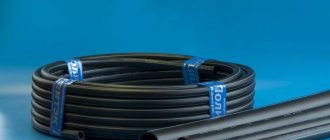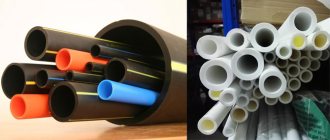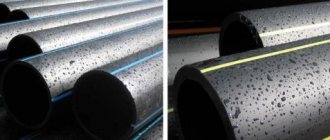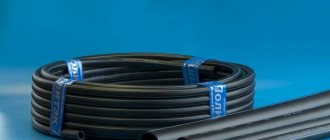To operate efficiently, each piping system consists not only of pipes, but also of many components. After all, straight horizontal and vertical sections of water supply are constructed from pipes, and they are connected, branched, made turns and connected to different devices using fittings, they are also called fittings.
The pipe fittings are special parts that connect the pipes to each other. They ensure the tightness, flexibility and integrity of the pipeline, making it convenient to use. Even if the pipeline itself is absolutely straight, fittings are still needed at the entry and exit points, installing special sensors and equipment.
The fittings are designed for the installation of complex engineering communications: water pipelines, gas pipelines, drainage and sewer networks.
Types of plumbing fittings
Let's start with the typology of shaped parts with the material used for their manufacture. The material of the fittings does not have to match the material of the water supply pipes. For example, to branch cross-linked polyethylene pipes, plastic tees are used.
According to the material, shaped products can be:
- Steel;
- Cast iron;
- Plastic (plastic);
- Bronze (bronze alloys);
- Brass (brass alloys);
- Combined.
According to the type of fastening, fittings can be:
- Welded: attached to water pipes by hot or cold welding;
- Threaded: attached to water pipes with threads;
- Flanged: installation of water supply from pipes of medium and large diameters on bots with nuts.
Methods of connecting to the pipeline
Welded and threaded fittings are used to join traditional metal pipelines. Welded ones have smooth ends for ease of welding with the pipeline. The most common welded pipe fittings are bends, tees and reducers.
To connect water and gas pipes, threaded fittings with inch pipe threads are used. For a tight connection, use a strand of flax with paint applied to it, sealing tape or thread. The seal is screwed onto the thread along the pitch and reliably protects against leakage.
The surface of the parts must be free of holes and traces of welding. Cracks and damage to it are unacceptable. The end surface must be
perpendicular to the axis of free passage of the fitting. For strength, cast iron threaded fittings are equipped with a collar at the edges - a thickening.
There is another way to connect pipe fittings without threading or welding. It is used in so-called compression fittings. In this case, O-rings are used for tightness. Such joints are easy to install and dismantle, they reliably seal the gas environment and are resistant to vibration.
Plastic connections
The parts of polypropylene pipes are connected by soldering the ends using a special soldering iron. It heats the surfaces of the parts being connected simultaneously with the surface of the pipe end to a temperature of 260 °C. The molten surfaces are connected and, upon cooling, form a homogeneous sealed structure at the point of connection. This is a very simple and popular way of piping home heating appliances and plumbing.
Combination fittings are available. Their design is an adapter with a metal thread. Using combined parts, you can connect a plastic pipe with a metal analogue.
The simplest connection method is used in the installation of non-pressure PVC sewerage. In this case, the pipe simply fits inside the socket with a seal. The main thing is to maintain the dimensions and avoid distortion at the junction.
Metal-plastic connections
A press connection is the most reliable way to join metal-plastic pipes. It is carried out by crimping the pipe around a specially designed fitting. Crimping is performed with a tool that fits the configuration of the part profile. Press jaws must have an internal structure that matches the fitting being connected.
Compression or split ring fittings are an equally popular way of joining such pipes. They are used for heating and water supply pipelines with open installation. This joining system is not used for hidden pipe laying.
Basic plumbing fittings
The main (basic) shaped parts are:
- 90º angles: products for turning the water supply route at right angles;
- Tees: Provide a branch of the water supply line from the main route.
- Crosses: Provide division of the water supply system into two mutually perpendicular directions;
- Elbow: Provides a smooth turn of the water supply route.
- Transitions: Provide narrowing or expansion of the water supply system. Allows you to join pipes of different diameters.
Read: For a novice plumber - basic rules and some tips
Fitting is an indispensable part of engineering systems and communications
It is impossible to imagine the modern world without high-quality plumbing and heating systems. The pipeline must meet such important characteristics as strength, reliability and durability. This requires a high-quality connection of components. One such option is fittings.
What is a fitting? This is a part that connects two pipes to each other, and also serves as branches and transitions to another diameter. At the moment, pipe fittings have a wide range of applications in the municipal and industrial sectors.
Tee
A cast iron “tee” fitting is also used to connect cast iron pipes. It is shaped like a hollow cylinder in the middle with a cylindrical branch. Inside the tee cylinders there is a thread.
Types of tees:
- cast iron transition tee - used when it is necessary to connect 3 pipes, and the diameter of one of them is smaller than the others,
- straight cast iron tee - used when connecting three pipes of the same diameter.
Transitional and straight cast iron tees
The order of connecting pipes when using a tee:
- one of the pipes is screwed to the tee, as when connecting using an elbow,
- The other two ends of the tee are connected to the free pipes by means of a long thread and a lock nut, as is the case with a coupling.
Schematic diagram of internal sewage system made of polypropylene:
Internal sewerage installation diagram
Related article:
Sewer cleaning - methods, options, tools and means. A separate article describes in detail how to independently deal with sewerage blockages in a city apartment and private house. Read it, it might be interesting.
Purpose
Sewage fittings are among the main parts of drainage systems. They are no less important than pipes or other components, since they are involved in the transportation of wastewater. In addition, fittings perform dispatch functions. They form a network and make its work possible. During reconstruction or repair, using fittings, new sections are connected and connected to other lines.
Shaped products, or fittings (sometimes also called additional elements) are used to change the configuration of the drainage network. They are installed at different points in the system:
- rotation of pipelines in a horizontal plane;
- change in channel cross-section;
- branching or connecting an additional line;
- installation of service elements;
- connecting dissimilar parts of the system;
- connecting plumbing fixtures;
- connection to containers or collectors.
Using certain types of fittings, you can assemble a sewer network of any size, length and configuration. In addition, you can change an existing line, add additional bends or devices to it. Shaped sewer parts can be installed at any point in the system if required by the assembly drawing or if the need arises during operation of the network. The possibilities of fittings are very large. It can be said with good reason that the configuration of the system is determined by the fittings, and the pipelines only connect them to each other.
Connecting parts for drainage systems and drip irrigation
A drainage system is necessary to effectively remove excess precipitation into the soil. The use of drainage structures makes it possible to protect the area from excess moisture, protect basements and basements from water flow and plant rotting. Today, PVC pipes and connecting parts are used for drainage systems, as they have a number of advantages:
- Light weight;
- Easy installation;
- Resistance to aggressive environments;
- Long service life.
To install this type of system, fittings for drainage pipes are used without the use of expensive equipment. Installation is carried out using such elements as couplings, adapters, tees.
Drip irrigation is a type of plant watering in which water is supplied to the root area using dispensers. A very important point is the correct choice of device for supplying water to the roots. Water supply devices are divided into:
A drip tape is a thin tube with a dropper embedded inside. This is the most common method of drip irrigation. Fittings for drip tape are designed for installation of drip tape. The advantages of drip irrigation are:
- Water saving;
- Complete dosing of plant nutrition;
- Possibility of watering at low water pressure;
- Saves time on watering.
In order to connect a pipeline, you need to carefully study the types of connecting parts and their characteristics, because individual design and installation are suitable for each type of engineering system.
Push fittings
Push fittings are connected without the use of special expensive tools. Push fittings have the following advantages:
- Environmentally friendly material;
- Ease of installation;
- There is no need to use special tools;
- Does not require maintenance during operation;
- Can be mounted in hard-to-reach places.
They produce parts from materials such as:
Push fittings are an innovation in the construction products market. This is the most unique and promising type of connecting elements for polymer pipelines.
Bronze fittings are considered one of the best connecting products. This is an environmentally friendly alloy, which, due to the thickness of the walls and its anti-corrosion properties, has become an indispensable attribute in gas pipelines and water supply.
Brass fittings are a mandatory element when installing plumbing and heating systems. Thanks to a special coating, brass fittings are highly resistant to corrosion and do not oxidize during pipeline operation.
An important detail when carrying out plumbing work is chrome fittings. Due to the properties of the metal, oxidation is practically impossible. According to regulations, inch parts may be marked as feet.
Stub
A plug for a cast iron pipe is a cylinder similar on one side to a straight coupling with a thread cut from the middle, and on the other side sealed - this is one of the types of connecting parts used in the installation of pipelines. Types of plugs (caps):
- plug with ribs;
- hex plug.
Cast iron plugs: with internal (left) and external (right) threads
The use of plugs allows you to hermetically close pipeline branches. Installation is carried out as follows:
Screwing the plug
- a thread having 7 turns is cut at the end of the pipe;
- a sealant is applied to the threads clockwise, as usual, the first turns are left without a sealant;
- Using a pipe wrench, tighten the plug until it jams.
